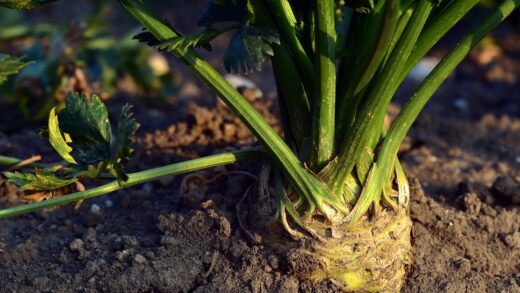Embarking on the journey of planting and propagating moss rose is a rewarding experience for any gardener, thanks to the plant’s cooperative nature and vigorous growth. This sun-loving annual, known for its dazzling, jewel-toned flowers, can be easily grown from either seeds or cuttings, offering flexible options for starting your display. Whether you are sowing seeds directly into a sun-drenched garden bed after the last frost or getting a head start by propagating cuttings indoors, the process is straightforward and yields beautiful results. Understanding the optimal timing, soil preparation, and techniques for each method is the key to establishing a healthy, thriving carpet of colour that will last all summer long.
Preparing for planting
The foundation for a successful moss rose patch is laid long before the first seed is sown, starting with the careful selection of a suitable planting site. Moss rose is uncompromising in its need for sunlight, requiring a location that receives at least six to eight hours of direct sun each day. A south-facing location is often ideal. Insufficient light will result in leggy plants with sparse foliage and, most disappointingly, a significant reduction in flowering. Observe your garden throughout the day to identify the sunniest spots before making your final decision.
Once you have identified the perfect sunny location, the next step is to prepare the soil. Moss rose demands excellent drainage and performs best in sandy or gravelly soils. If your garden consists of heavy clay or rich loam that retains moisture, you will need to amend it. To improve drainage, work a generous amount of coarse sand, perlite, or fine gravel into the top six to eight inches of the soil. This will create a looser, more porous medium that prevents water from logging around the roots, which is the most common cause of failure for this plant.
While moss rose can tolerate poor soils, removing weeds and loosening the existing soil is a crucial step. Clear the area of any competing weeds or grass that could smother the young seedlings. Use a garden fork or tiller to break up compacted soil, which will not only aid drainage but also make it easier for the delicate roots of the seedlings to penetrate and establish themselves. There is no need to add rich compost or fertilizer at this stage; in fact, overly fertile soil can lead to more leaves and fewer flowers, so it is best to keep the soil lean.
If you are planning to grow moss rose in containers, the preparation is just as important. Select pots with multiple, large drainage holes to ensure that excess water can escape quickly and efficiently. Use a specialized potting mix for cacti and succulents, or create your own by mixing one part standard potting soil with one part coarse sand or perlite. This will provide the sharp drainage that is essential for container-grown specimens, preventing the soil from becoming waterlogged after rainfall or irrigation.
More articles on this topic
Sowing seeds directly outdoors
Direct sowing is a simple and effective method for planting moss rose, particularly for gardeners in regions with a reasonably long growing season. The key to success with this technique is timing. You must wait until all danger of frost has passed in the spring and the soil has warmed to at least 18-21°C (65-70°F). Sowing seeds in cold, damp soil will result in poor germination rates and can cause the seeds to rot before they have a chance to sprout.
The seeds of moss rose are incredibly fine and dust-like, which can make even distribution a challenge. To overcome this, mix the tiny seeds with a small amount of dry sand before broadcasting them over the prepared soil surface. This allows you to see where you have sown and helps to spread the seeds more thinly and evenly. Aim for a light, even covering across the entire planting area, as this will reduce the need for extensive thinning later on.
After broadcasting the seed and sand mixture, it is crucial not to cover the seeds with soil. Moss rose seeds require light to germinate, so they should simply be pressed gently into the surface of the soil. You can do this by lightly tamping the area with the back of a rake or your hand, or by walking gently over the seeded area. This ensures good seed-to-soil contact, which is necessary for germination, without burying the seeds too deep and blocking the light they need.
Once the seeds are sown and pressed into the soil, water the area gently using a fine mist sprayer or a watering can with a rose attachment. A strong jet of water will dislodge the tiny seeds and cause them to wash away or clump together. Keep the soil surface consistently moist but not waterlogged until germination occurs, which typically takes one to two weeks in warm conditions. Be patient during this period and continue to provide gentle moisture to support the emerging seedlings.
More articles on this topic
Starting seeds indoors
For gardeners in cooler climates with shorter growing seasons, starting moss rose seeds indoors is an excellent strategy to get a head start. This method allows you to have well-established seedlings ready for transplanting as soon as the weather becomes suitable. Begin the process approximately six to eight weeks before your average last frost date. This timing ensures that the seedlings will be mature enough to handle the transition outdoors but not so large that they become root-bound in their containers.
Use shallow trays or small pots filled with a sterile, light-weight seed-starting mix. It is important to use a sterile medium to prevent “damping off,” a fungal disease that can be fatal to young seedlings. Moisten the mix thoroughly before sowing the seeds. Just as with direct sowing, mix the tiny seeds with sand for better distribution and sprinkle them thinly over the surface of the moist starting medium. Do not cover the seeds with soil; instead, gently press them onto the surface to ensure good contact.
After sowing, cover the seed trays with a clear plastic dome or a sheet of plastic wrap to create a humid environment, which aids germination. Place the trays in a warm location that receives plenty of bright, indirect light. A spot on a sunny windowsill or under grow lights is ideal. The seeds need warmth, around 21-24°C (70-75°F), and light to germinate successfully. You should see the first signs of sprouting within one to two weeks. Once the seedlings emerge, remove the plastic cover to increase air circulation and prevent fungal growth.
As the seedlings grow, it is crucial to provide them with strong, direct light. If you are using a windowsill, rotate the trays regularly to prevent the seedlings from leaning towards the light source. If they appear thin and stretched, they are not receiving enough light, and you should supplement with a grow light placed just a few inches above the foliage. Keep the soil moist but not soggy. Once the seedlings have developed at least two sets of true leaves, you can thin them out or carefully transplant them into individual small pots to give them more room to grow.
Propagation from cuttings
Propagating moss rose from cuttings is an incredibly easy and fast way to create new plants, especially from existing favourite cultivars whose seeds may not produce true-to-type offspring. This method is best performed in late spring or summer when the parent plant is actively growing. Taking cuttings allows you to essentially clone the parent plant, ensuring the new plants will have the exact same flower colour, size, and growth habit. It is an excellent way to fill in bare spots or create more plants for additional containers.
To take a cutting, select a healthy, vigorous stem from the parent plant. Using clean, sharp scissors or pruning snips, cut a section of stem that is about three to four inches long. It is best to take cuttings from stems that do not currently have flowers on them, as this allows the cutting to focus its energy on root production rather than blooming. Once you have your cutting, gently strip the leaves from the bottom one to two inches of the stem. This bare portion of the stem is what will be placed into the growing medium.
You can root the cuttings in either water or a soil medium. For soil rooting, fill a small pot with a well-draining mix, such as a blend of peat moss and perlite or sand. Use a pencil or a dibber to make a small hole in the medium, then insert the bare end of the cutting into the hole and gently firm the mix around it. Although rooting hormone is not strictly necessary for moss rose, which roots very readily, a light dip in rooting powder can help to speed up the process and increase your success rate.
After planting the cuttings, water them lightly and place the pot in a warm location with bright, indirect light. You can cover the pot with a plastic bag to create a mini-greenhouse effect, which helps to maintain high humidity. Keep the soil lightly moist. Roots will typically begin to form within a week or two. You can check for root development by giving the cutting a very gentle tug; if you feel resistance, roots have formed. Once the cutting is well-rooted and shows signs of new growth, it can be transplanted to its final location.
Transplanting and spacing
Before you can transplant your indoor-grown seedlings or newly rooted cuttings into the garden, they must be gradually acclimated to outdoor conditions. This process, known as “hardening off,” is critical to prevent transplant shock. Begin by placing the young plants in a sheltered, shady spot outdoors for just an hour or two on the first day. Over the course of a week to ten days, gradually increase the amount of time they spend outside and slowly expose them to more direct sunlight and wind.
The best time to transplant is on an overcast day or in the late afternoon to minimize stress on the plants from the hot sun. Prepare the garden bed by ensuring the soil is loose and weed-free. Dig small holes for each plant that are just large enough to accommodate the root ball. Space the holes appropriately to give each plant enough room to grow and spread. A spacing of about six to eight inches apart is generally recommended for creating a dense, continuous ground cover.
Carefully remove each seedling or cutting from its container, making sure to keep the root ball as intact as possible. Place the plant into the prepared hole so that the top of the root ball is level with the surrounding soil surface. Planting too deep can lead to stem rot. Gently fill in the soil around the plant and firm it down lightly with your hands to eliminate any large air pockets. This ensures good contact between the roots and the garden soil.
After transplanting, water the new plants thoroughly to help settle the soil and provide essential moisture to the roots. For the first week or two after transplanting, keep the soil consistently moist to help the plants establish their root systems in their new environment. Once you see signs of new growth, you can gradually reduce the watering frequency to the deep but infrequent schedule that is typical for mature moss rose plants. This careful transition will set your plants up for a season of healthy growth and prolific blooming.


















